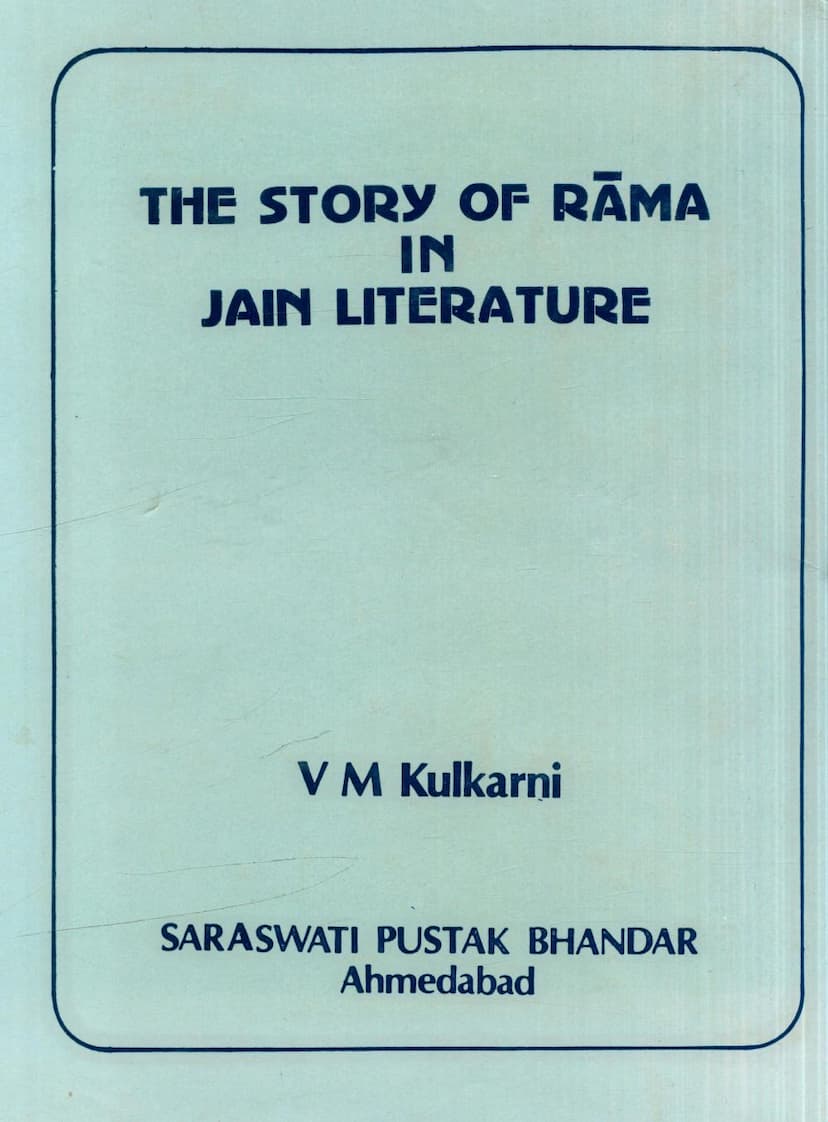Story Of Rama In Jain Literature
Added to library: September 2, 2025
Loading image...

Summary
This book, "The Story of Rama in Jain Literature" by V.M. Kulkarni, provides a comprehensive comparative and critical study of various Jain retellings of the epic Ramayana. Published by Saraswati Pustak Bhandar, Ahmedabad, it is based on the author's PhD thesis submitted to the University of Bombay in 1952.
Key aspects of the book include:
- Comprehensive Scope: It examines numerous noteworthy Jain versions of the Rama story, comparing them with Valmiki's Rāmāyaṇa and highlighting areas of agreement and divergence.
- Literary Evaluation: The book offers a literary assessment of these Jain versions.
- Linguistic Coverage: It analyzes Jain adaptations written in Prakrit, Sanskrit, and Apabhraṁśa, reflecting the poetic traditions of both Śvetämbara and Digambara poets.
- Methodology: The study begins by establishing the nature and features of Jain mythology in comparison to Hindu mythology. Each significant Jain Rāmāyaṇa is then analyzed critically, with attention paid to the poet's life, date, and other works. Footnotes provide cultural insights, stylistic merits, and comparative analyses.
- Key Jain Texts Covered: The book delves into several important Jain versions, including:
- The Paümacariya of Vimalasūri, the earliest extant Jain poem on the Rama story.
- The Padma-Purāṇa of Ācārya Raviṣena.
- The Rāmāyana version found in Sanghadāsa's Vasudevahindi.
- The Rāmāyaṇa version of Guṇabhadra (from his Mahāpurāṇa/Uttara-Purāṇa).
- The Rāmāyaṇa version of Śilācārya (from his Cauppanna-mahāpurisa-cariya).
- The Rāmāyaṇa version of Ācārya Hariṣena (from his Bṛhatkathākośa).
- The Rāmāyaṇa version of Puspadanta (from his Mahāpurāṇa).
- The Rāmāyaṇa version of Dhanesvara Sūri (from his Śatrunjaya Māhātmya).
- The Rāmāyaṇa portion of Bhadreśvara's Kahāvali.
- The Rāmāyaṇa version of Ācārya Hemacandra (from his Trisasti-Salākā-Purușa-carita and Yogaśāstra commentary).
- Focus on Jain Adaptations: The book emphasizes how the Jains adapted the popular Rama story to align with their religious and philosophical tenets, often removing or reinterpreting elements considered Brahmanical or divine in the original Hindu epics.
- Comparative Analysis: The study highlights how Jain versions often portray characters like Rāvaṇa, Kaikeyi, and Vālin in a more sympathetic or morally complex light compared to Valmiki's portrayal, often emphasizing Jain virtues like Ahimsā and the law of Karma.
- Date and Influence: It critically examines the dating of Vimalasūri's Paümacariya and discusses the interrelation and potential influences between various Jain Rāmāyaṇas and their relationship with the broader Indian literary tradition.
- Origin of the Jain Rama Story: A significant portion of the book is dedicated to exploring the origin of the Rama story within Jain literature, analyzing the tradition recorded by Vimalasūri and scrutinizing its historical accuracy, and discussing the likelihood of borrowing from Valmiki's Rāmāyaṇa. It also considers alternative theories, such as an independent Southern Dravidian legend of Ravana, and the potential influence of Buddhist texts like the Dasaratha Jātaka and Adbhuta Rāmāyaṇa on certain Jain adaptations, ultimately concluding that the Jain versions are largely derivative from Valmiki's Rāmāyaṇa.
- Development and Contribution: The book traces the development of the Rama story through different Jain poets, noting the specific contributions and modifications made by each author, such as the rationalization of supernatural elements, the elevation of characters, the creation of a distinct Jain atmosphere, and the propagation of Jain doctrines.
- Literary Appreciation: The author provides a critical appreciation of the poetic merit and narrative style of each work, often comparing them with Valmiki and other classical Sanskrit poets.
In essence, Kulkarni's work provides a scholarly and detailed exploration into how the widely popular Hindu epic of Rama was reinterpreted and retold within the framework of Jain philosophy, ethics, and literary traditions, offering valuable insights into the comparative literature of ancient India.